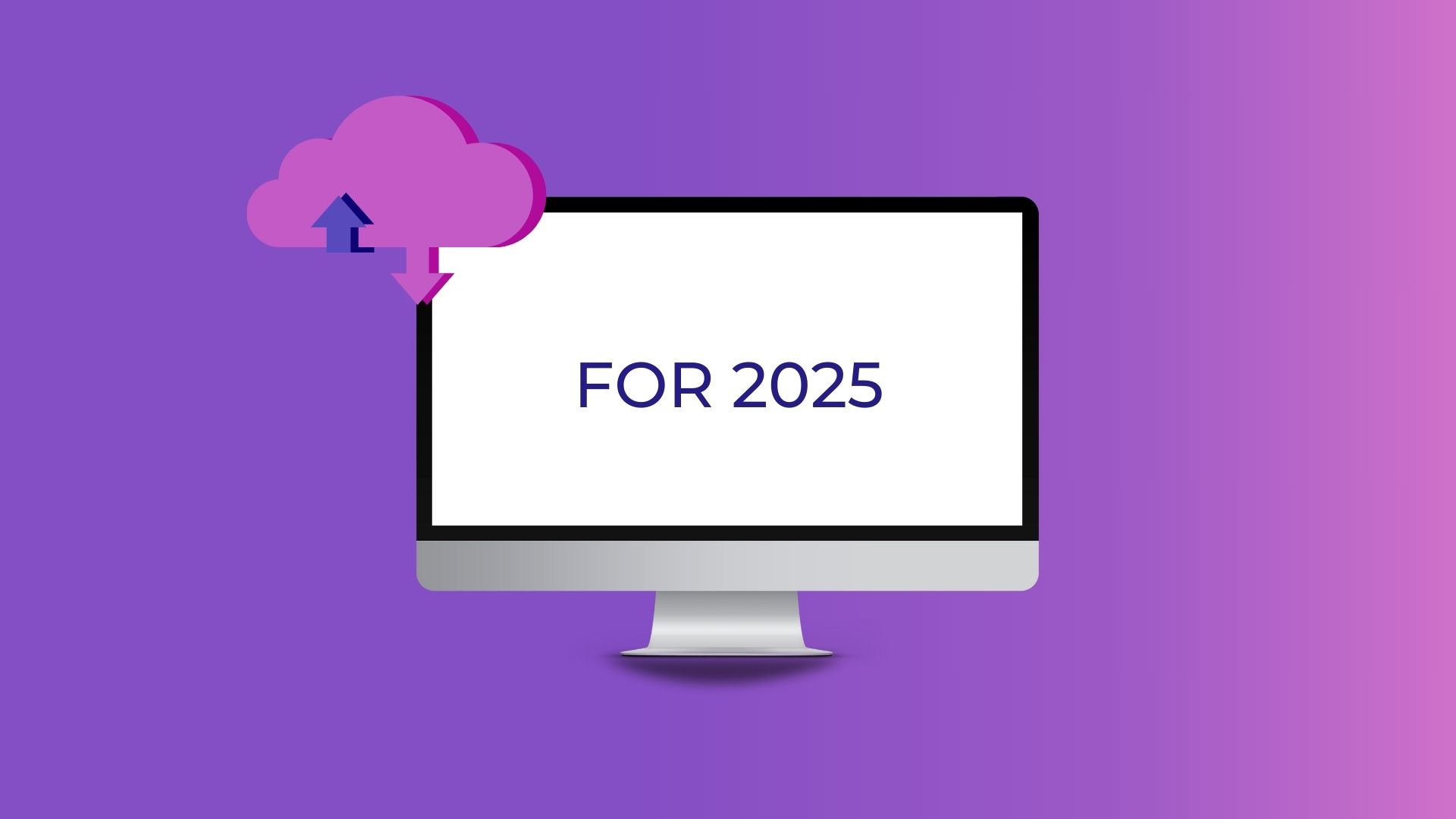Mastering Enterprise SaaS SEO: 7 Strategies for Dominating Search Engine Rankings in 2025

What is Enterprise SaaS SEO?
Enterprise SEO is increasing a SaaS company’s visibility on online platforms, especially in a SERP (Search Engine Results Page). By optimizing their SEO strategies to improve search engine rankings, an enterprise SaaS website can rank on the first page of search engine results, which could lead to higher click-through rates and conversions. Tailored strategies are crucial for achieving successful enterprise SaaS SEO, as they involve in-depth audience research, case studies, best practices, FAQ responses, and the utilization of both in-house and external resources.Benefits of Enterprise SEO Strategy
The general goal for any SEO strategy is to rank high in search engine results. This is crucial for SaaS companies, as they need more engagements and conversions for their revenue to kick in.Enterprise SEO strategies are essential for coordinating SEO efforts in large enterprises with multiple locations and teams, ensuring everyone is working towards a shared objective. To achieve successful enterprise SaaS SEO, it is important to tailor strategies specifically for enterprise SaaS companies, focusing on in-depth audience research, case studies, best practices, FAQ responses, and utilizing both in-house and external resources.However, ranking on the first page of Google Search doesn’t guarantee conversions; you also must optimize the content and structure of your SaaS website for visitors to engage with your product.Here are several benefits of SEO for enterprise:- Increasing click-through rates and engagements
- Delivering content that piques the interest of your niche audience
- Helping lessen the costs you need to convert a potential customer
- Giving your website an air of legitimacy and authority
- Making your website more user-friendly and interactive
1. Keyword Research for Enterprises
A properly executed keyword research strategy benefits website optimization and product development. Keyword research doesn’t just optimize your website’s content but also gives you in-depth data on the interests and needs of your target customer base.Additionally, using keyword research tools for choosing relevant keywords is crucial to enterprise SaaS SEO. Effective keyword research is essential for achieving successful enterprise SaaS SEO by tailoring strategies to meet the specific needs of enterprise SaaS companies.Conducting thorough keyword research for competitive industries
The more specific your keywords are, the greater the chances that your content creation efforts will help you rank high in search results. The first step towards achieving this is to identify your SaaS product’s niche audience, and then build up from there. Thorough keyword research is crucial for successful enterprise SaaS SEO.Once you have determined your niche, the next step is to analyze what your competitors are doing. Analyzing competitor keywords is a traditional yet effective way of initially knowing where the right direction is. You can use Ahrefs, Semrush, or any other keyword research tool to do competitor analysis, as this could give you much-needed insight into the current high-ranking keywords in your niche and improve your search engine rankings.Identifying long-tail and high-converting keywords
The priority in doing keyword research for enterprise SEO is to generate more organic traffic and collect more conversions. In the SaaS space, specific keywords entail the interests of your customer base. These come in the form of long-tail keywords, the more high-converting keywords for SaaS websites.Long-tail keywords are typically five-word phrases that speak to your niche audience’s most specific needs or interests. These keywords usually don’t have a large search or query volume, which is beneficial for you.If you target relevant long-tail keywords, you’d have less competition, which could result in a higher SERP ranking. Utilizing long-tail and high-converting keywords is essential for successful enterprise SaaS SEO.Analyzing user intent on search engines
Your enterprise SaaS SEO strategy should be centered around your target customer base. One of the ways to do this is by analyzing user search intent and search trends, two SEO components that will help you understand your customers’ interests. Understanding user intent is crucial for successful enterprise SaaS SEO.Google Search, which has 85.53% of the worldwide search market share, could provide you with a data-driven report on user intent. What is the motive of your customers in entering a specific keyword? Do they want to purchase a service, or do they just want relevant information about a certain topic?These are the questions that user intent analysis can answer, something that could further boost a SaaS website’s visibility.2. On-Page SEO for Enterprise SaaS Websites
Compared to other e-commerce sites or news websites, doing on-page optimization for enterprise SaaS websites could be slightly different.Again, you optimize your content mainly to convert visitors to actual customers. You can do that through these enterprise SaaS-specific on-page tips we have prepared for your reference. On-page SEO plays a crucial role in achieving successful enterprise SaaS SEO by ensuring your content is tailored to your audience and optimized for search engines.Optimizing title tags, meta descriptions, and header tags
When discussing on-page enterprise SEO, the first things that come to mind are title tags, meta descriptions, and header tags. After all, these are the elements that prop up search engine results.Your target customer base’s first impression of your brand depends on these three components.For enterprise SEO, optimizing your title tags, meta descriptions, and header tags take on a higher level of importance so your users will not get lost in the rabbit hole. You should remember that you have a large-scale website that contains a vast library of content and landing pages. Make sure that important keywords are present in your tags and descriptions. Optimizing these elements is crucial for successful enterprise SaaS SEO.Creating valuable and informative content for target keywords
Gone are the days when you could get away with aggregating content and putting in as many keywords as possible. Search engines like Google have since rolled out updates that require websites to write relevant and unique content to rank higher in search engine results.So, it goes on to say that content is king in SEO. Enterprise SEO strategies emphasize the importance of coordinating efforts across large enterprises to ensure everyone is working towards a shared objective, pulling in more organic traffic, and securing buy-in from stakeholders. High-quality content is crucial for successful enterprise SaaS SEO, as it involves in-depth audience research, case studies, best practices, and FAQ responses.Identifying relevant long-tail keywords is one thing; writing informative content to help your readers decide is another. Bringing in content writers and copywriters who are experts in your niche is an investment that usually pays off for SaaS websites.Utilizing internal linking and content silos for enhanced SEO
Internal linking is among the most underrated components of on-page optimization, especially for large-scale SaaS websites. It doesn’t just provide a hierarchy of relevant content; you could also spread out the authority juice from your higher-ranking pages.When planning your internal linking strategy, you should consider content silos. A silo structure is a hierarchical content organization that connects based on niche and theme.This silo structure makes it easier to place internal links since you already know which pages are related. Effective internal linking and content silos are crucial for successful enterprise SaaS SEO, as they help in-depth audience research, case studies, best practices, and FAQ responses.Implementing schema markup for rich search results
A schema markup acts as the code or language search crawlers use to understand and analyze your website content. If you fail to properly implement it, search engine results pages won’t be able to produce rich search results for your content, which could negatively affect your SERP rankings.Schematic markup essentially scours your content for very important details that people usually ask for or type in search queries.Your content might be featured in the “People also ask” section or your brand might get a Knowledge Panel on the first page of the results.You can use Google’s Structured Data Markup Helper to implement schema markup for your SaaS website. Proper use of schema markup is crucial for successful enterprise SaaS SEO, as it helps in-depth audience research and enhances visibility in search results.3. Technical SEO for Enterprise SaaS Companies
Along with the on-page components, doing technical SEO for enterprise websites is an important job to consider. You have to ensure your website’s infrastructure is sound and error-prone. Otherwise, you risk wasting your content strategy because search engines can’t fully crawl or index your pages. Technical SEO is crucial for successful enterprise SaaS SEO, as it ensures that your site is optimized for search engines and can effectively reach your target audience.Below, we’ll cover the ways you could optimize your SaaS website’s technical SEO elements.Website architecture and navigation for large-scale sites
For enterprise SEO, it’s very important for your visitors to easily navigate your site. Large-scale websites often have more pages and content, and a disorganized website architecture could drive away most of your potential customers.To avoid this setback, you have to seamlessly connect each page based on relevance and topical category. The categories on your home page should be meticulously organized, and your internal links should always connect to relevant or similar pages.Moreover, you should ensure that search crawlers accurately index your sitemap. So as not to miss out on potential engagement, always check that the pages you want to be indexed are included in the sitemap. Effective website architecture and navigation are crucial components of successful enterprise SaaS SEO.Mobile optimization and responsive design for diverse devices
Currently, more than 60% of searches or queries on Google come from mobile devices, which emphasizes the need for SaaS websites to become mobile-friendly.While it’s true that most CMS platforms include mobile optimization, there are still some things that you can do to ensure your website’s mobile responsiveness.The right content technology platform will let you activate AMP (Accelerated Mobile Pages), a Google-led feature that could improve your website’s performance on mobile devices.This way, your website loads faster even on less powerful smartphones and tablets. Mobile optimization is crucial for successful enterprise SaaS SEO, as it ensures a seamless user experience across all devices.Page speed optimization and SEO performance enhancements
Have you experienced exiting a website you just opened because it loads very slowly? Now, imagine that your SaaS website is performing the same way. You’ll miss out on visitors seeing your products and services, which could pull down your engagement and conversion rates and negatively impact your search engine rankings.To enhance the performance of your website, you need to optimize several elements to boost a page’s loading speed. You can cut back on several plugins and advertisement placements, update the codes on the page, and compress images and other multimedia elements.This way, your web page becomes less heavy, which is the key to page speed optimization. Page speed optimization is crucial for successful enterprise SaaS SEO, as it ensures that your audience has a seamless experience, ultimately improving engagement and conversion rates.URL structure and canonicalization for complex web pages
Another overlooked issue that haunts enterprise SEO plans is the presence of duplicate pages and disorganized URL structure. When engines like Google sense duplicate pages on your website, they select one representative page to potentially show on the organic search results page.So, to make sure that Google picks the right page, you need to do canonicalization and select the representative page yourself.Moreover, you should also optimize all your URLs. These should contain some of the relevant keywords from your research, although be careful not to overdo it. To help boost your SEO efforts, always keep your URLs brief and keyword-rich.Effective URL structure and canonicalization are crucial for successful enterprise SaaS SEO.4. Off-Page SEO Strategies for Enterprise SaaS
Along with working on your content marketing strategy and fixing technical SEO issues, there are also important off-page actions that you can do for your enterprise SEO strategy. Building backlinks from other websites is a crucial off-page factor.There are many social media platforms that you can leverage as well.Off-page SEO strategies play a significant role in achieving successful enterprise SaaS SEO.Link-building and outreach in the enterprise space
Collecting backlinks from other high authority websites could be a viable growth driver for your SaaS website. It’s like recognition from one of your supervisors; backlinks boost your brand’s authority and authenticity. This, eventually, will help your sales team to promote your SaaS product. Enterprise SaaS SEO strategies often emphasize the importance of link-building to attract high-value leads and establish industry authority. Effective link-building and outreach are essential components of successful enterprise SaaS SEO.A properly executed outreach strategy will increase your DA (Domain Authority), which could drastically increase your organic traffic.You can buy backlinks from high authority websites, granted that you follow the rules from the Google Webmaster Guidelines.You can always craft valuable content that other websites will link to organically.Leveraging social media for brand exposure and backlinks
Social media has been an invaluable enterprise digital marketing channel for all industries, encompassing the enterprise SaaS SEO space. Establishing a presence on these platforms is always a big boost for your brand, especially if you can successfully reach and engage with your niche audience.Along with increasing brand exposure and awareness, socials could also be your source for collecting backlinks. Social media plays a crucial role in successful enterprise SaaS SEO by helping to amplify your content and drive traffic to your site.If you use the right keywords and create shareable blog posts, you can see your engagement rate improve.The key to leveraging social media is consistency; if you consistently post content, chances are the algorithm will pick you up and increase your reach.Online reputation management for enterprise-level brands
All these SEO strategies and efforts will be for naught if you don’t have a good brand reputation. During this advent of social platforms, it’s easier to establish your brand and even easier to crash your reputation to the ground.Your online reputation takes on heavier importance nowadays, mainly because marketing channels are mostly present on digital platforms. Ensuring a positive online reputation is crucial for successful enterprise SaaS SEO.So, whether it’s on social media or organic search, ensure you follow the stipulated guidelines.5. Local SEO Considerations for Enterprise SaaS
For SaaS startups and SMBs (Small to Medium-Sized Businesses), local optimization is an integral part of their SEO efforts. Local audiences typically compose the customer base of companies of this size.On the other hand, does an enterprise-level company need to pour its energy into optimizing for the local market?Local SEO considerations are also crucial for successful enterprise SaaS SEO, as they help tailor strategies to specific audience needs and improve overall campaign effectiveness.Continue reading to find out.Optimizing local presence for multiple locations
When selling a SaaS product, you always want to expand your reach as much as possible. If you’re expanding into a new geographical location, you’d want to test the waters and see if you could engage a customer base there.This is why SEO optimization for the local market is still of the essence for enterprise SaaS companies. Optimizing local presence is crucial for successful enterprise SaaS SEO.Targeting multiple locations doesn’t just involve researching geographic-specific keywords; you must consider other elements like optimized local landing pages and contact information.You should also register your business in local online listings and directories. Alongside your local content and blog posts, these elements could boost your presence in multiple locations.Local citation management and consistency across platforms
As a reputable SaaS business, you don’t want your potential and actual customers to get all confused with your company information. This is why optimizing your local search citations is key to establishing a complete and accurate business profile on online platforms. Local citation management plays a crucial role in successful enterprise SaaS SEO by ensuring your business information is easily accessible and reliable.When doing local citations, here are the components that you need to optimize:- Business name
- Complete address
- Phone number
- Operating hours
- Company logo
- Company description
- Company email address
Encouraging customer reviews and testimonials
Customer reviews are an important aspect of brand awareness, especially for SaaS products. You need people to subscribe to your product to reach your revenue goal. That will require some form of commitment from them resources-wise, so they need to know just how effective your offering is.To that point, customer reviews and testimonials will help make your product more legitimate in the eyes of your target audience. You can include these testimonials as a standalone category on your website. Customer reviews are crucial for successful enterprise SaaS SEO as they provide valuable insights and build trust with potential clients.Read Fortis Media’s reviews on Design Rush.6. Content Marketing and SEO Integration
SEO and content should go hand-in-hand when optimizing websites for enterprises. You need to create engaging and informative content for your visitors to stay on your page.At the same time, you must develop a proper SEO strategy for people to notice your content. Aligning your content and SEO strategies is necessary. Integrating content marketing with SEO is crucial for achieving successful enterprise SaaS SEO.Here’s how you can get started.Creating a content strategy aligned with SEO goals
The common denominator between content and SEO is your audience. You need a customer-centric approach to optimize both of these areas.The first step towards aligning content and SEO is to identify and understand the interests and intent of your niche audience. Enterprise SEO strategies can help coordinate efforts across large enterprises, ensuring everyone works towards a shared objective. Aligning your content strategy with SEO goals is crucial for successful enterprise SaaS SEO.When you get that part covered, the next step is to conduct keyword research and use KPIs (Key Performance Indicators) to measure the effectiveness of your marketing campaign.There are free SEO and content tools that could help you track and monitor your performance. This means you could immediately pull out SEO campaigns that are not working.Developing educational resources, case studies, and whitepapers
If you want to demonstrate your expertise in your niche, you can put up educational resources, case studies, and whitepapers on your website. These resources are dedicated to helping your audience improve their knowledge on particular topics. These elements are crucial for achieving successful enterprise SaaS SEO.SaaS websites focus on writing case studies. This combines a story and a report where a SaaS company details how it helped a particular client achieve their business goals.As a result, this gives potential customers an in-depth view of how that SaaS company can help them.Leveraging high-quality content for link-building and thought leadership
In line with case studies and whitepapers, building your own thought leadership content is a big boost for your online visibility and engagement.A large-scale SaaS business is already considered an industry leader, so they have plenty of input in the leadership aspect of the game.A brilliant thought leadership content plan could also augment your link-building strategy, especially since other websites want to refer to an enterprise company specializing in SaaS. Many perks come with the reputation that you have built in the market, and you just have to tap into this ability.High-quality content is crucial for successful enterprise SaaS SEO, as it helps in-depth audience research, case studies, best practices, and FAQ responses.7. Measuring and Monitoring Enterprise SaaS SEO Success
Developing and executing these strategies to perfection is not the endpoint of an SEO campaign. You can’t know if your strategy will work, so you need to regularly measure and monitor your website’s performance.Measuring and monitoring are crucial components of successful enterprise SaaS SEO, ensuring that strategies are effectively tailored and adjusted as needed.Thankfully, there are monitoring tools that could help you out, as you’ll find out in the following sections.Setting up SEO analytics and tracking tools
Of course, an enterprise SaaS company will have enough resources to subscribe to a wide range of paid SEO analysis tools. But if you’re just testing the waters, there are numerous free SEO analytics and tracking tools out there.Google Analytics and Google Search Console are the two free-of-charge platforms that stand out. These tools track important metrics such as bounce rate, session duration, organic traffic, and number of users.Additionally, there’s Google PageSpeed Insights that provides reports on your website’s loading speed. You can also tap into free, albeit limited, versions of Ahrefs, Answer the Public, Semrush, and Moz. Utilizing these tools is essential for successful enterprise SaaS SEO.Key performance indicators (KPIs) for enterprise-level SEO
SEO planning could vary in approach depending on the size of the website or business. Small and large websites share the goal of making it to the first page of organic search results, but the journey to the bottom of the sales funnel could be different. Successful enterprise SaaS SEO relies heavily on tracking key performance indicators to tailor strategies effectively.When planning enterprise SEO strategy, it’s important to prioritize performance indicators that directly affect your business goals. Here are several KPIs that we recommend you should monitor:- Total visitors by country or location
- Unique visitors
- Bounce rate on landing pages
- Form submission rate
Analyzing data to refine SEO strategies
These analysis and monitoring tools won’t matter if you’re unwilling to refine your SEO strategy. As webmasters and marketers always say, SEO is not an overnight sensation. It takes some time, and several failures, for your strategy to materialize.SEO is a trial-and-error process that will test your willingness to adapt to changing times. An SEO strategy that worked two years ago may not be as effective today. So to make sure that you’re keeping up with the trends, maintain a regular analysis of your website’s traffic, user engagement, and content. Data analysis is crucial for successful enterprise SaaS SEO, ensuring your strategies are tailored to your audience and industry needs.Future Trends in Enterprise SaaS SEO
For obvious reasons, SEO’s future lies in AI (Artificial Intelligence) and ML (Machine Learning). As in many industries, process automation could be the next main disruptor in the SEO market, which will greatly impact large-scale SaaS websites.Understanding and adapting to these future trends is crucial for successful enterprise SaaS SEO.Exploring emerging SEO trends and technologies
With AI and ML flexing their potential and strength in the industry, it’s only natural that SEO will trend in that direction. AI-powered enterprise SEO tools will be the name of the game, and it’s only a matter of time before that materializes. Emerging trends and technologies are crucial for successful enterprise SaaS SEO, as they help tailor strategies to meet the specific needs of enterprise SaaS companies.Along with AI, there are also other SEO trends to keep an eye on, including the following:- Mobile responsiveness will take on a new level of importance
- Searching information via image upload will see an uptick through Google Lens
- SEO’s continuous growth will see companies invest more in business intelligence and analytics
- The rise of rich snippets could eat up other websites’ click-through rates
Preparing for voice search and AI-driven SEO advancements
With all these trends and technologies, your enterprise SaaS website should be able to keep up with the times. You have the potential uptick in voice search optimization, where users can just say the words, they want to search instead of typing them into their computers or smartphones. Additionally, leveraging AI-driven advancements is crucial for successful enterprise SaaS SEO, ensuring your strategies are tailored to meet the evolving needs of your audience.As a webmaster or SEO expert, how do you prepare for this technology?Here are several tips:- Research question keywords and long-tail keywords
- Optimize your local SEO practices
- Look into how your competitors are ranking for rich snippets
- Create content that has a conversational tone
Conclusion
Enterprise SEO is essential for large-scale SaaS companies to maintain market position and expand their customer base. By optimizing SEO practices, businesses can improve visibility, boost brand awareness, and develop products that meet customer needs.Whether managed in-house or outsourced, consistency is key. Utilize free tools like Google Search Console and Google Analytics to monitor and refine your SEO strategies. Embrace the evolving field of enterprise SaaS SEO to stay competitive and effectively engage your niche audience.FAQs About Enterprise SaaS SEO
What sets enterprise SaaS SEO apart from regular SEO?
Enterprise SaaS SEO focuses on optimizing for multiple locations and expanding into new markets, whereas smaller businesses typically target a single location to increase brand awareness.
How does SEO impact a large SaaS business?
Enterprise SaaS SEO not only boosts website visibility but also aids in customer-centric product development by analyzing competitors and customer behavior.
What are the on-page strategies for Enterprise SaaS?
Focus on long-tail keywords and craft conversational content to optimize for rich snippets and improve visibility across multiple locations.
How can Enterprise businesses build quality backlinks?
Develop a robust link-building strategy by acquiring high-authority backlinks, managing brand reputation, and creating high-quality, informative content that attracts organic links.
Read our other articles

iGaming SEO: The Ultimate Guide to Ranking iGaming Sites in 2025


How SEO and PPC Work Together: A Practical Guide


What is a PPC Agency? A Comprehensive 2025 Guide






